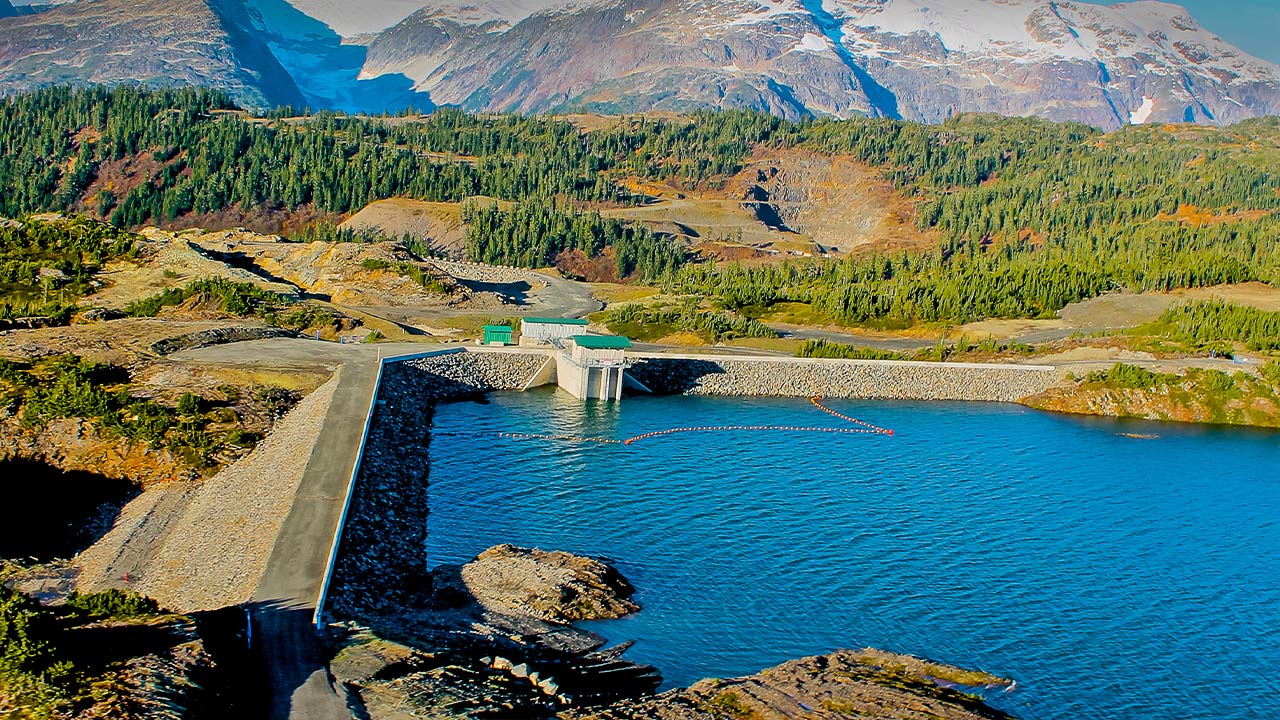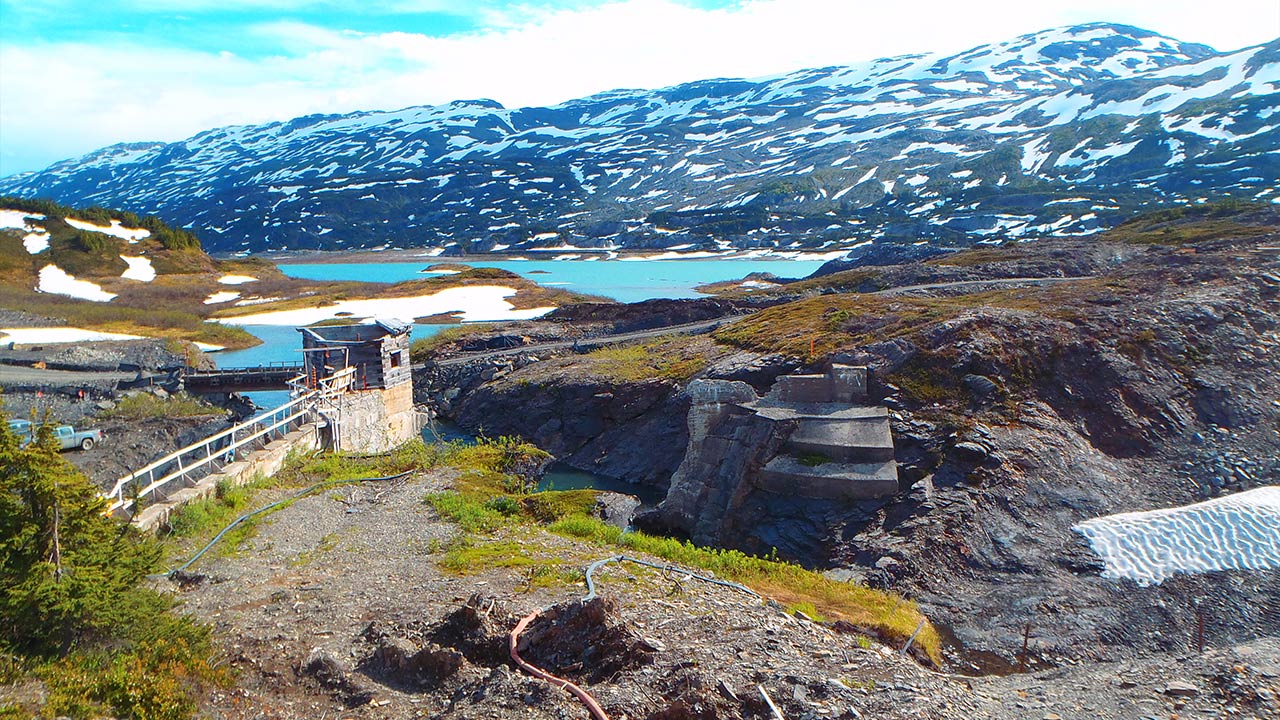
Tetra Tech brought decades of experience supporting hydroelectric projects to address the unique challenges of designing and constructing the 32-megawatt Long Lake hydroelectric facility, 17 kilometers (11 miles) north of Stewart, British Columbia. Tetra Tech’s industry-leading expertise in the development of innovative concepts provided a unique solution to complex hydropower and dam challenges, improving schedule and the overall economics and viability of the project.
Benefits
- Sheet-pile core, rockfill dam, 300 meters (1,000 feet) long and 20 meters (65 feet) high
- 780-meter (2,500-foot) elevation drop—one of the highest head hydroelectric projects in the world
- Generates more than 130 gigawatt hours per year (GWh/y) of energy via a 12,000-meter (40,000-foot) transmission line transmitting power at 138 kilovolts
- Beneficial reuse of local backfill, rock fill, and concrete aggregate and original dam intake tunnel
Tetra Tech designed a new sheet-pile core, rockfill dam for the project that is 300 meters (1,000 feet) long and 20 meters (65 feet) high. Stewart typically has 570 centimeters (224 inches) of annual snowfall from September to June, resulting in a short construction season. Tetra Tech’s design took into consideration the wet conditions, the short construction season, and the seismic region. The choice of a sheet-pile core enabled quick construction and was not affected by weather-related issues. The rockfill dam with the sheet-pile core provided substantial flexibility. Construction used rock available on-site to avoid the need for hauling along the treacherous mountainside.
The 1.2-meter (4-foot) diameter penstock conveys water from the dam more than 7,000 meters (23,000 feet) down a mountainous road, crossing numerous streams, gorges, and steep slopes. The penstock includes a pipe bridge for the outlet channel from the dam and a vacuum relief valve in the event that the penstock is dewatered. The elevation drop (head) of 780 meters (2,500 feet) makes the Long Lake facility one of the highest head hydroelectric projects in the world.
The project’s state-of-the art powerhouse houses two 16-megawatt horizontal shaft twin jet Pelton turbines. A flow bypass system with Pelton jet valves dissipates energy during bypass in the event of a plant shutdown. A 12,000-meter (40,000-foot) transmission line transmits power to a BC Hydro substation.
